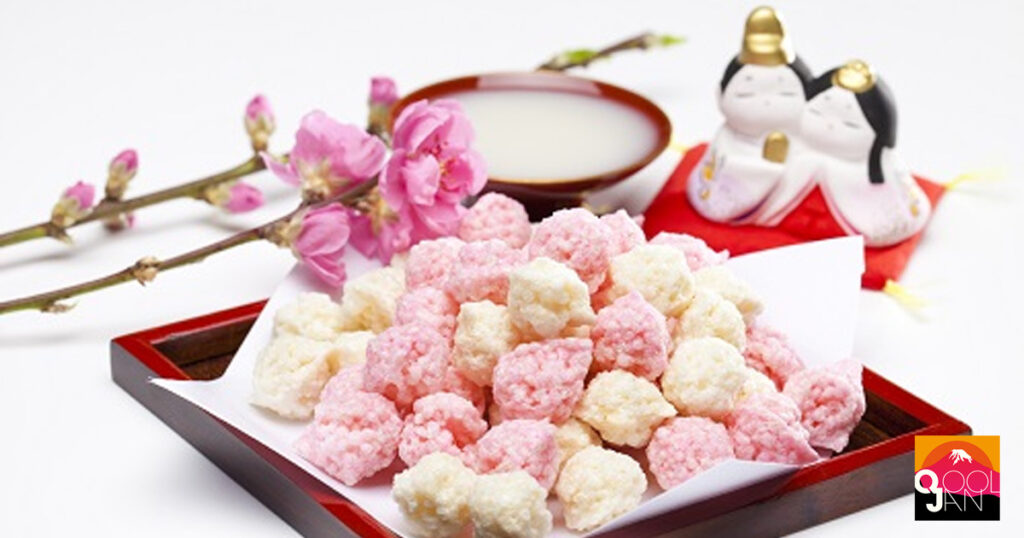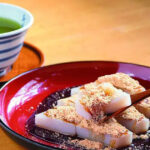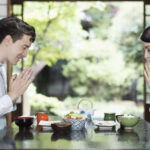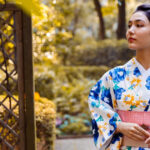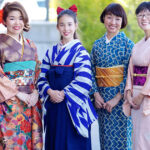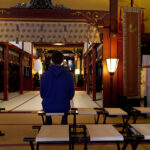I have written some articles in a series about Hinamatsuri; for instance:
Hina dolls , Hina dolls role, and the items on the seven-tiered stand.
Finally I’d like to talk about the special kinds of food eaten on March 3.
What do Japanese people eat on March 3?
We usually eat and drink 1) Hishimochi, 2) Hina arare, 3) Shirozake / Amazake, 4) Hamaguri Soup 5) Chirashizushi. Each of these foods has a meaning.
1) Hishimochi
Hishimochi is a symbolic Japanese sweet associated with Hinamatsuri. It is rhomboid in shape and typically formed from three layers of pink, white and green mochi from the top to the bottom.
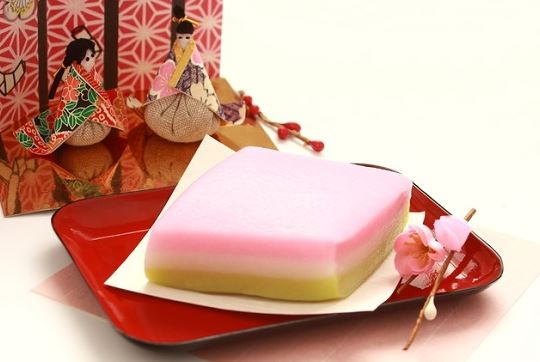
Each color has a meaning.
For instance:
The pink color in the mochi is derived from the fruit of a plant called Gardenia Jasminoides. It is symbolic of plum flowers.
The white mochi is made using water chestnuts. It is effective for lowering blood pressure, and represents purity and lingering snow.
The green mochi is made using Japanese mugwort. It is believed to be a restorative that improves the blood.
2) Hina arare
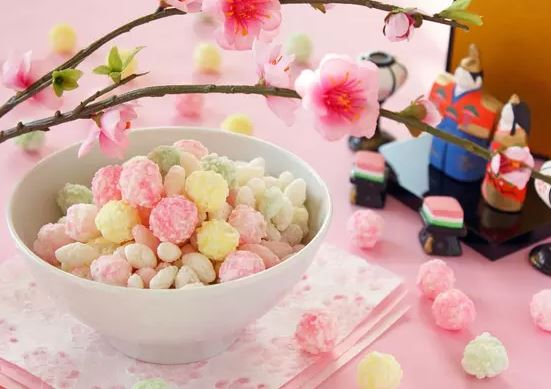
This is a kind of Japanese confectionery made from grilled pieces of rice cake. It is said that it was made from Hishimochi that had been broken into pieces.
3) Shirozake / Amazake
This is sweet white sake made from fermented rice. Before the Edo period (17th – 19th centuries), people used to dip peach blossoms into the sake.
The reason they did this is because the Kanji for “100 years old” (百歳) have a double meaning.
One meaning is literally “100 years old”, and the other is “peach”, so people drank it and wished for longevity.
4) Hamaguri Soup
March is said to be the best season for shellfish.
Hamaguri means clam, and it is said that a pair of clamshells fit together perfectly, so they indicate matrimonial happiness in Japan.
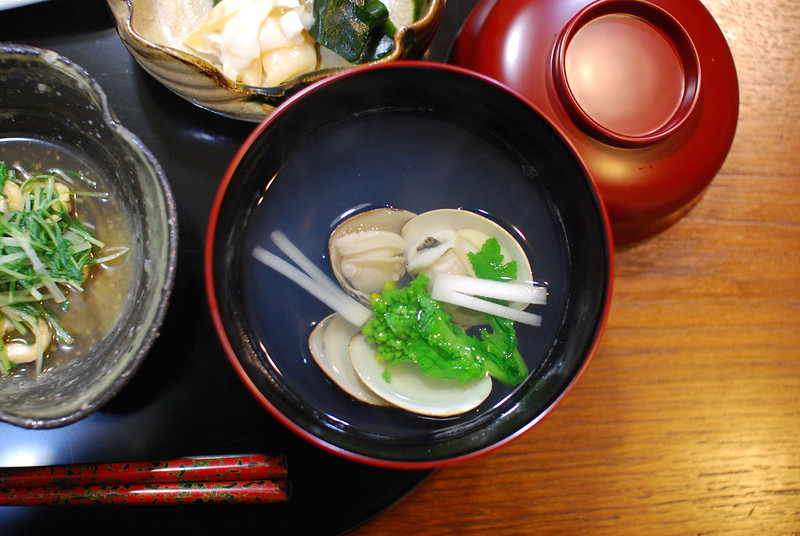
Credit: midorisyu via Flickr
5) Chirashizushi
Chirashizushi is a kind of sushi which is rice served in a box or bowl with a variety of ingredients sprinkled on top.
The most popular ingredients to put on top:
For instance: 1) Prawns 2) Lotus root 3) Beans
1) Prawns represent longevity.
2) Lotus root represents prospects for the future.
3) Beans represent serving someone faithfully.

Credit: sakura-chihaya via Flickr
If you are traveling Japan on March 3, you will see the foods shown above at supermarkets and convenience stores.

